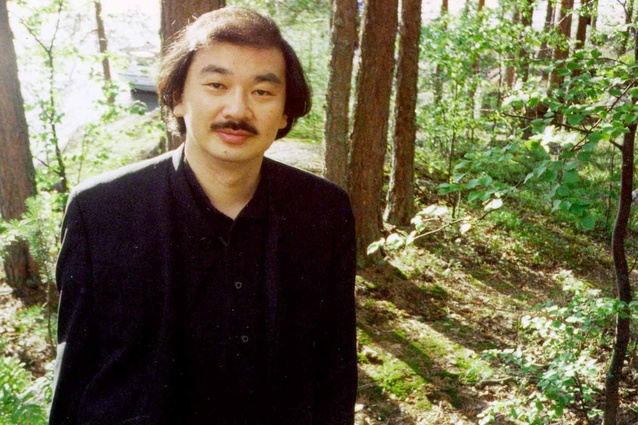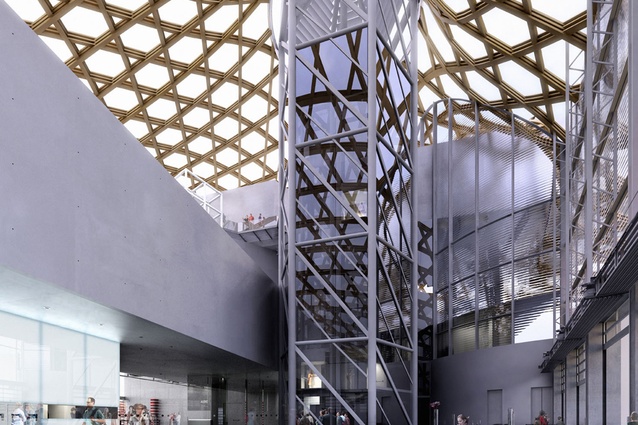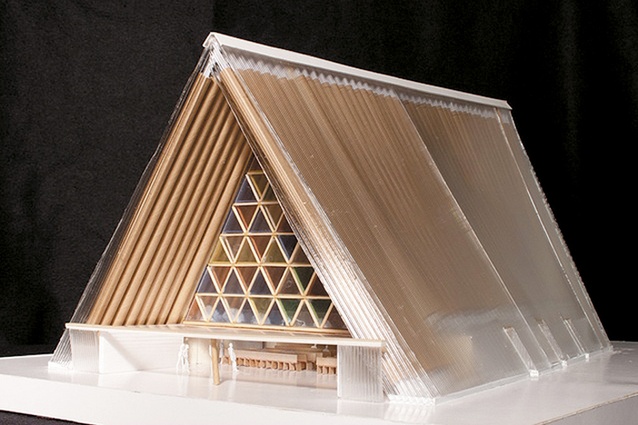Shigeru Ban lecture at University of Auckland School of Architecture and Planning
Alastair Mckenzie reviews Shigeru Ban’s recent lecture at the University of Auckland School of Architecture and Planning.
The lecture hall was crowded, people overflowing onto the stairs, lining the walls and the edge of the stage. The audience’s anticipation was palpable when a quiet moment spontaneously expanded into complete silence, abruptly followed by laughter as the audience realised what had happened. This awkward moment prompted the lecture to start slightly ahead of time; Auckland’s Architects must have heard Shigeru Ban coming.
Ban began with his frustrations about architecture being the preserve of the rich and powerful. “We work for privileged people. They have power and money and they want us to make a monument to express that.”
Were Ban a politician he would be a humanitarian populist, with a touch of anti-establishment rebelliousness, but as an architect he has sought ways to work for the general public. While Ban does work for the rich, the momentum it grants enables him to help the less fortunate and bring great architecture to the masses.
From the time of his very first project, fresh from university and keenly setting up his own practice, the cardboard tube was in his mind. He utilised this simple product in his design for an Alvar Aalto exhibition, forming it into spatial dividers which framed exhibited items, a simple beginning to what would become his most identifiable design trait.
His humanitarian core is apparent in a later project, an affordable housing prototype called the Furniture House. Recognising the battle between household objects and space, Ban used full-height plywood cabinetry to support the roof and divide spaces. This resulted in an austere, geometric space, seemingly to tidy to live in, perhaps because life’s clutter is stashed in its walls.
Ban wove a thread connecting each project to the next, the structural storage of his Furniture House leading to the shipping container walls of the Nomadic Museum. In this building, cardboard tubes form huge columns, which Ban assured the audience was very strong, holding aloft the museum roof.
Ban has found many applications for the cardboard tube, from large dome structures to his temporary office in Paris and disaster relief structures around the globe. Cardboard architecture is waterproof (if painted yearly), easy to assemble, and so cheap the parts cannot be sold: cardboard structures are suited for impoverished countries where the desperate recipients of emergency tents are tempted to sell their steel frames as scrap metal. Through an impressive series of applications, Ban has pushed cardboard towards his ultimate goal - architecture that is accessible to the less fortunate and disaster stricken.
The end of the lecture dealt with our local issues – how architecture can aid in the recovery and restoration of Christchurch. The outcry that followed the disastrous loss of the Christchurch Cathedral and the expressions of love shown towards it show how connected we are to our built environment. The loss of this building, perhaps only temporarily, has created a gap into which Ban is inserting his ‘cardboard cathedral’ project. Ban pointed out that what is temporary and what is permanent relies not on whether a building is made of concrete or cardboard, but how much the public loves that building. What is loved will somehow be retained. This is the measure by which Ban works. The Christchurch Cathedral would have lasted forever, but now there is a void that Ban seeks to help patch.
More information on Shigeru Ban’s work is available here.
For a podcast of the lecture click here.












